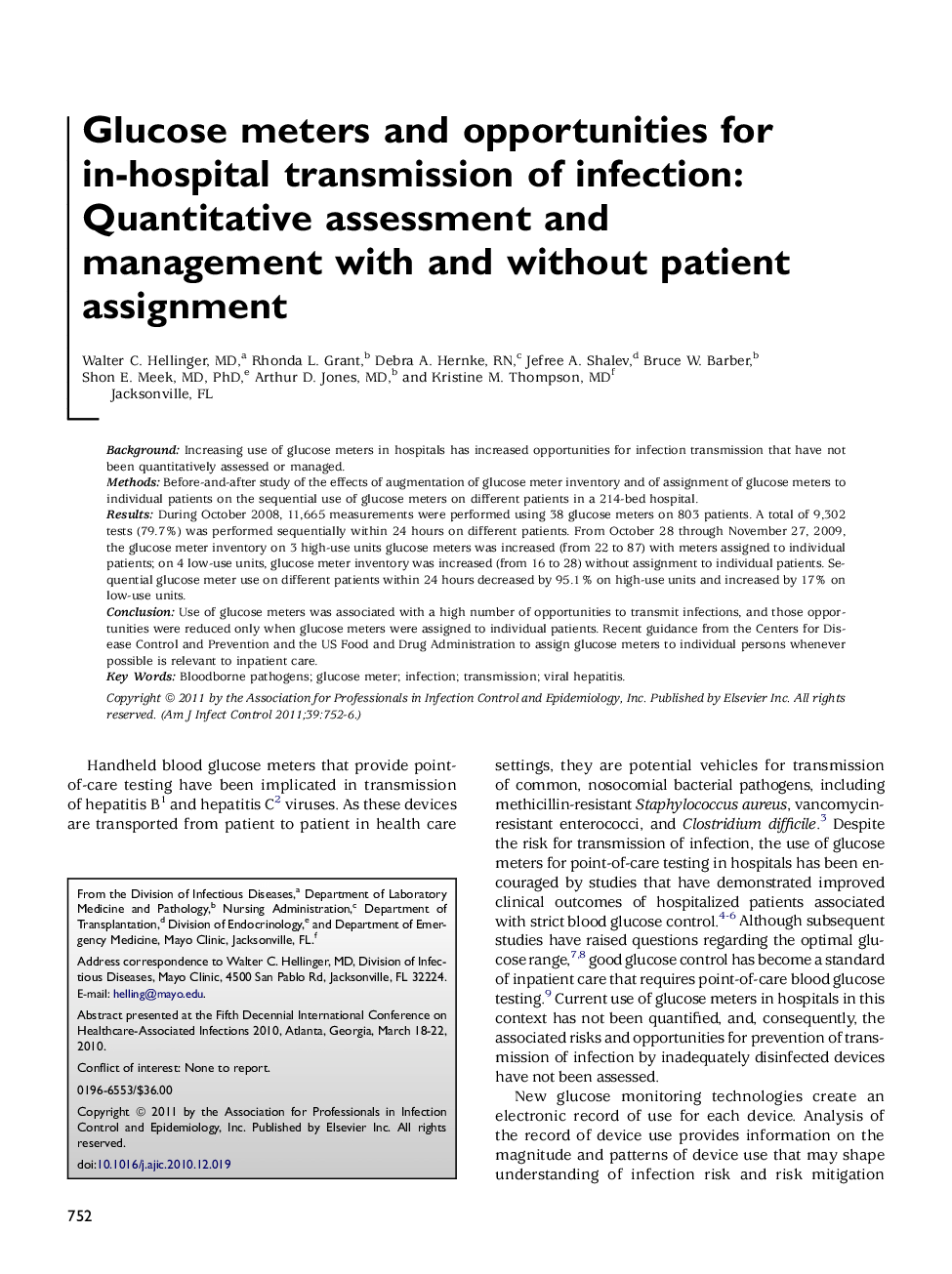| Article ID | Journal | Published Year | Pages | File Type |
|---|---|---|---|---|
| 2637811 | American Journal of Infection Control | 2011 | 5 Pages |
BackgroundIncreasing use of glucose meters in hospitals has increased opportunities for infection transmission that have not been quantitatively assessed or managed.MethodsBefore-and-after study of the effects of augmentation of glucose meter inventory and of assignment of glucose meters to individual patients on the sequential use of glucose meters on different patients in a 214-bed hospital.ResultsDuring October 2008, 11,665 measurements were performed using 38 glucose meters on 803 patients. A total of 9,302 tests (79.7%) was performed sequentially within 24 hours on different patients. From October 28 through November 27, 2009, the glucose meter inventory on 3 high-use units glucose meters was increased (from 22 to 87) with meters assigned to individual patients; on 4 low-use units, glucose meter inventory was increased (from 16 to 28) without assignment to individual patients. Sequential glucose meter use on different patients within 24 hours decreased by 95.1% on high-use units and increased by 17% on low-use units.ConclusionUse of glucose meters was associated with a high number of opportunities to transmit infections, and those opportunities were reduced only when glucose meters were assigned to individual patients. Recent guidance from the Centers for Disease Control and Prevention and the US Food and Drug Administration to assign glucose meters to individual persons whenever possible is relevant to inpatient care.
